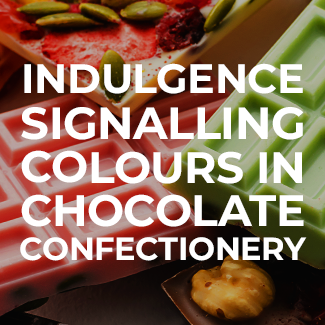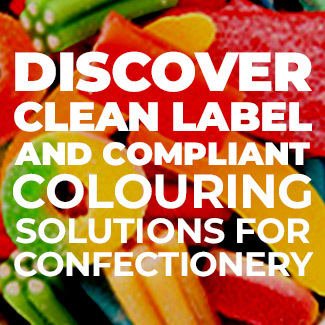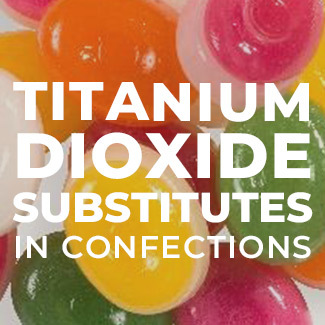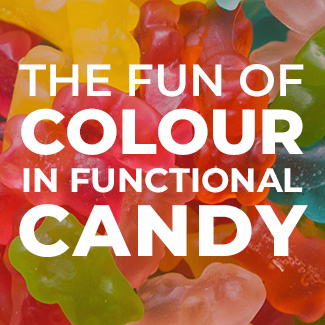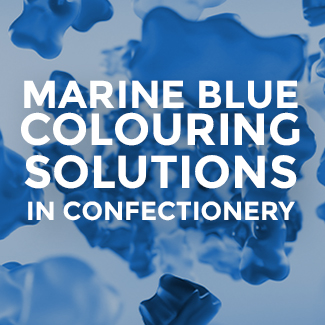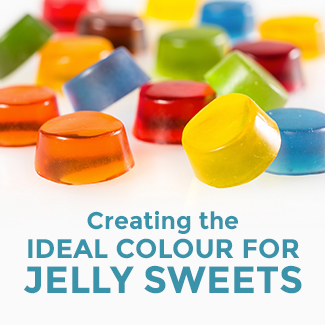Innovation in Natural Yellow Colouring for Confectionery
Consumers experiment with confectionery products, if they offer a variety of flavours, colours, textures, and fragrances, whether it is in search of a nostalgic memories or out-of-the-box sensory experiences. A more recent way of engaging with sweets is considering health or wellness aspects. The definition of “wellness” today encompasses mental, emotional, and spiritual dimensions.
This better-for-you movement has also impacted the sugar and gum confectionery products.
European consumers are looking for plant-based and natural ingredients in what they consume. In the 12 months leading up to December 2022, the percentage of confectionary launches in Europe with a vegan claim rose to 19% of all launches. The pastilles, gums, jellies, and chews has been the primary category driver of this increase. One of the highlights is meeting the consumer need of clean label products and providing sustainable packaging.

Yellow shades are in top 3 for confectionery launches.

As confectionery offerings increase, product differentiation is key for brands to stand out.
The new generation of consumers is looking for colourful, vibrant products that they can engage with and enjoy. It comes to no surprise that bright yellow shades play a key role and are amongst the top 3 colours for confectionery launches. Recent product launches consist of yellow shades combined with indulgent flavour profiles such as mango, pineapple, banana, and cardamom. According to Mintel data, curcumin was one of the top 3 natural colours used in the sweet confectionery category.
Since last year, using Curcumin (Turmeric) as the natural yellow source increased by 19% across Europe for sugar confectionery products.
Next to vibrant colour shades, packaging plays a role for brands and products to stand apart on shelf.
With the increasing trend towards naturalness and authenticity, transparent packaging is the ideal support for a concept to shine as a lasting colour impression increases product appeal and liking. It can capture attention, and consumers equally view transparent packaging as a sign of ‘transparency’ in a more holistic sense. Studies have demonstrated when a sweet was given in transparent packaging as opposed to opaque packaging, people consumed noticeably more of it (69%) when it contained a visually appealing colour.

How to achieve light stable yellow shades?
Curcumin is the principal colouring pigment of turmeric, obtained by selective extraction from the rhizomes of curcuma longa L. Due to its bright, intensive yellow shade, it is the perfect natural counterpart of synthetic yellow colours, such as Tartrazine/ Yellow 5/ E102.

Consequently, Curcumin is a popular choice when formulating in applications like bakery or confectionery. Yet light exposure is an important consideration when formulating with curcumin-based colouring. ‘Standard’ Curcumin has low light stability and high migration properties which could influence colour vibrancy and impact the overall product appeal.
With decades of development expertise and proprietary technologies, Sensient is able to offer a broad spectrum of curcumin-based solutions for colouring foods and natural colours, and consistently expands the options meeting contemporary market demands. The latest addition to the Intense Yellow family is a high-load natural colour for effective dosing and efficient cost-in-use. This innovation is a stabilized solution being the perfect fit for confectionery and sugar decorations. Rivalling the colour brilliancy of synthetic yellow colours, it can achieve bright, intense yellow colour shades like Tartrazine/E102 and shows superior performance regarding the elimination of migration and fading versus other potential market solutions.
Do you consider Food Safety a priority?
While botanically source ingredients like Turmeric add an inherent level of complexity to food safety controls, they enable manufacturers to respond to consumer desire for clean and simple ingredients. You may remember a prominent market recall on turmeric for high lead content several years ago. Recalls like this raise a question around companies not doing the appropriate testing for food safety compliance according to regulatory guidance. Even if not intentional, as this issue is not uncommon for turmeric often growing in regions with high lead content in the soil, compliance is non-negotiable. Today’s consumers need to rely on manufacturers to provide high-quality and safe products and seek increasing transparency. Manufacturers in return rely on their ingredient partners.
For Sensient, Food Safety is not a question, but a core value. Sensient’s global Certasure Food Safety scheme ensures our natural colouring solutions are safe and authentic. Not only does the program meet the most stringent global safety requirements – in many cases Certasure exceeds them to best protect your most valuable assets every day: your products and brands.






